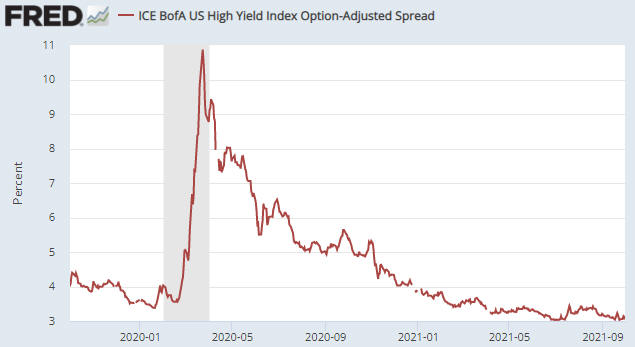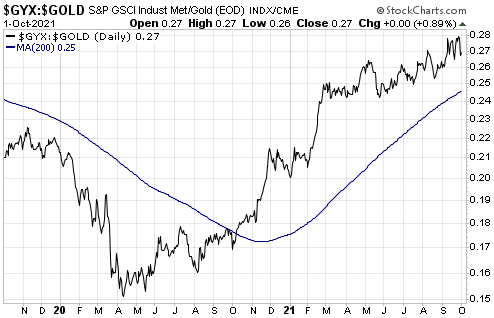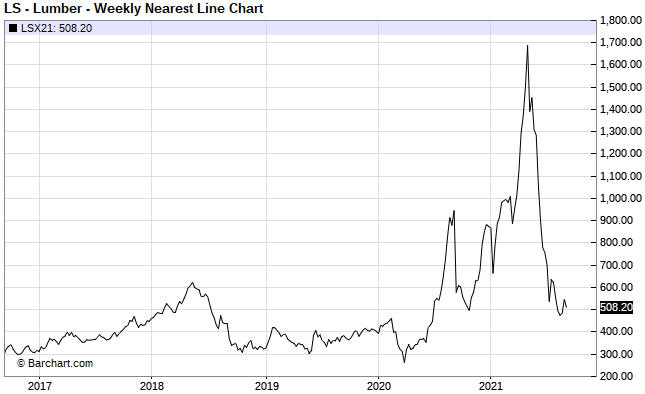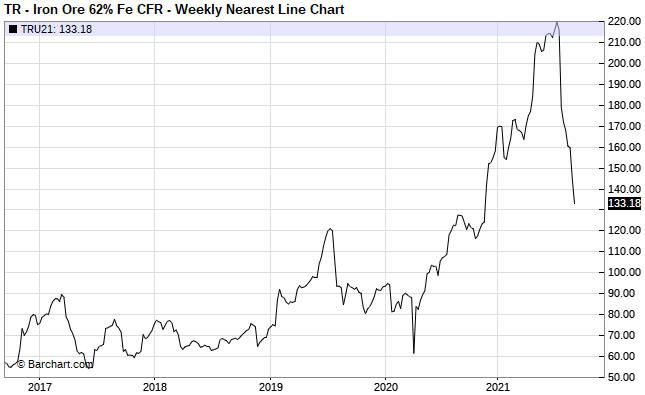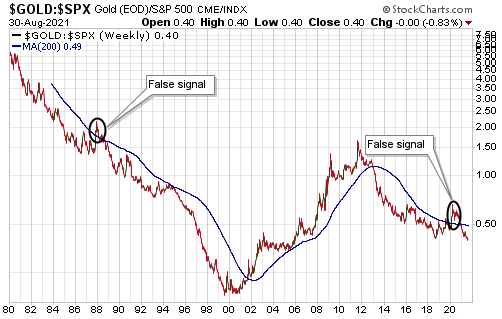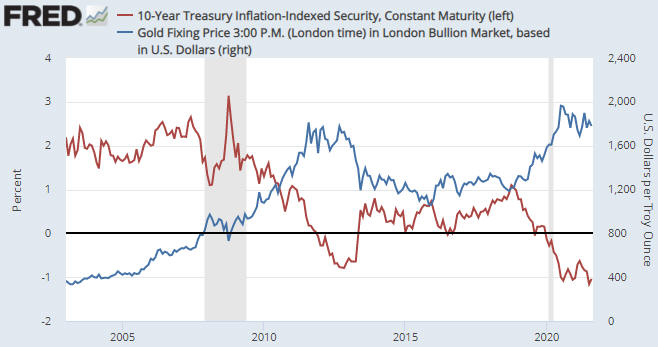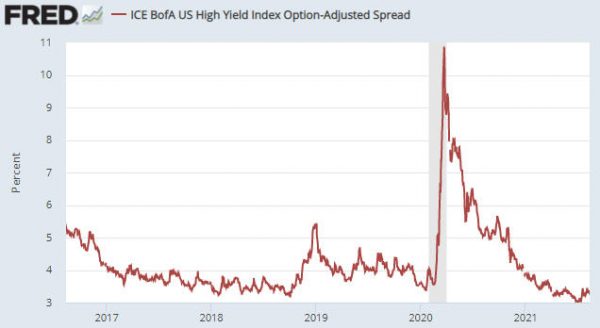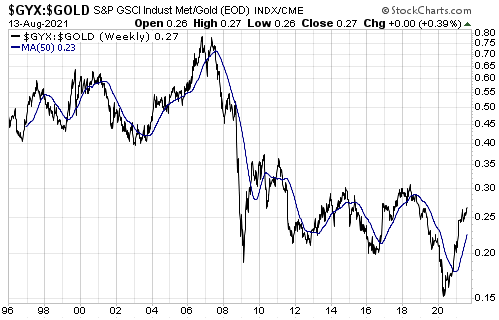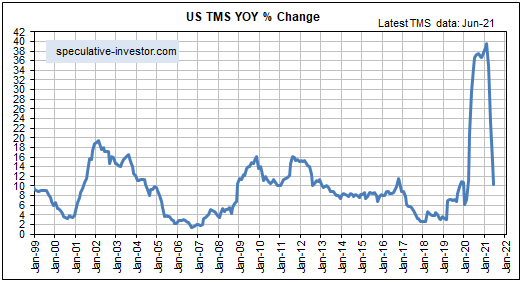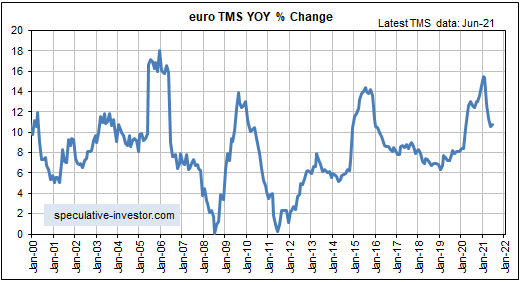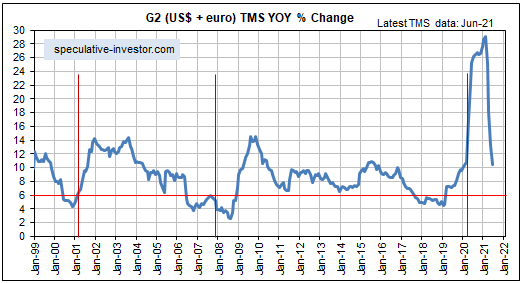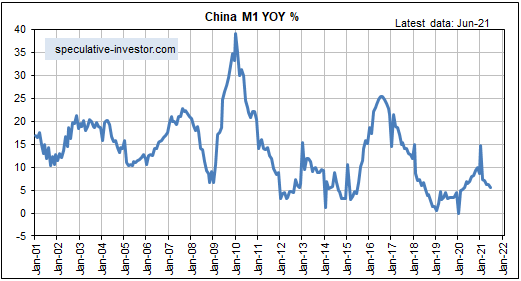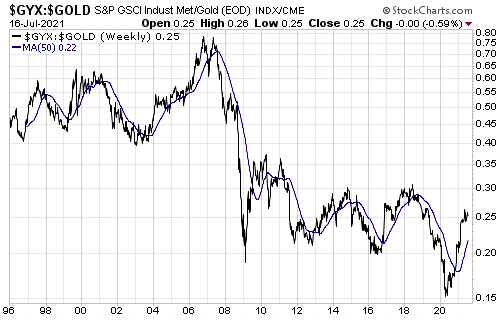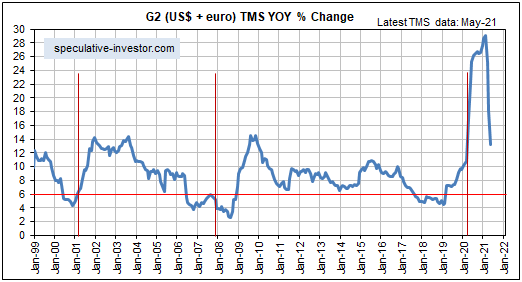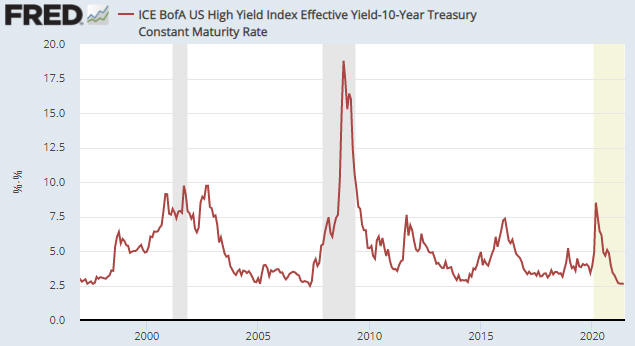There are two things that always happen at or prior to the start of a boom-to-bust transition for the US economy. One is a clear-cut widening of credit spreads and the other is pronounced weakness in the Industrial Metals Index (GYX) relative to the gold price. These indicators have sometimes warned incorrectly that a bust was about to begin, but they have never failed to signal an actual boom-to-bust transition in a timely manner. Below are charts showing the current positions of these reliable boom-bust indicators.
The first chart shows the US High Yield Index Option-Adjusted Spread (HYIOAS), a good indicator of US credit spreads.
In early-July of this year the HYIOAS was at its lowest level in more than 10 years and not far from an all-time low. It spiked upward around the middle of July, but it has since returned to near its low. This means that credit spreads in the US remain close to their narrowest levels ever.
Note that a credit-spread reversal would be signalled by the HYIOAS making a higher short-term high AND moving back above 4%. The first of these criteria (the initial warning) would be triggered by a move above 3.5%.
The next chart shows the GYX/gold ratio. To generate a boom-to-bust warning the line on this chart would have to move below its 200-day moving average, but currently it is in a clear-cut upward trend and not far from its cycle high.
Clearly, neither of the indicators that in the past have always warned prior to the start of a boom-to-bust transition for the US economy is close to triggering. This means that the economic boom* that began during the second quarter of 2020 remains in full swing. Furthermore, as things currently stand it looks like the start of a boom-to-bust transition is at least six months away.
For long-side speculations and investments, during the boom phase of the cycle it’s important to emphasise assets and commodities that do well during booms. For example, industrial commodities (e.g., energy, base metals, lithium, rare-earths) generally should be favoured over gold during the boom phase, with the opposite applying during the bust phase. This may seem like a statement of the bleeding obvious, but a lot of market participants stay bullish on certain investments and bearish on others regardless of whether the economy is in the boom phase or the bust phase.
*An economic boom is a period of generally-rapid economic activity fuelled by monetary inflation. It does not necessarily involve sustainable economic progress. In fact, most of the apparent gains achieved during the boom tend to be relinquished during the subsequent bust.
 Print This Post
Print This Post

